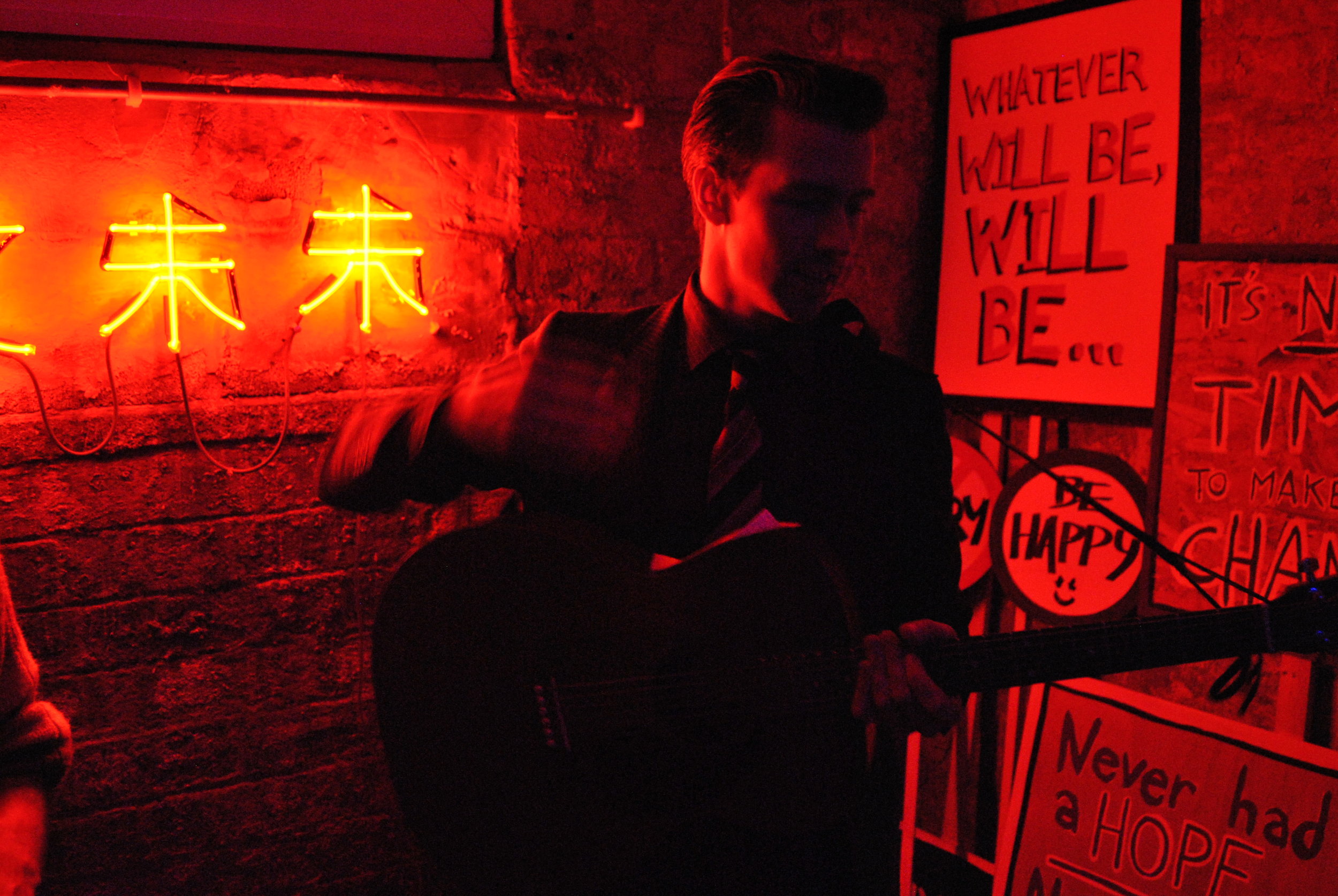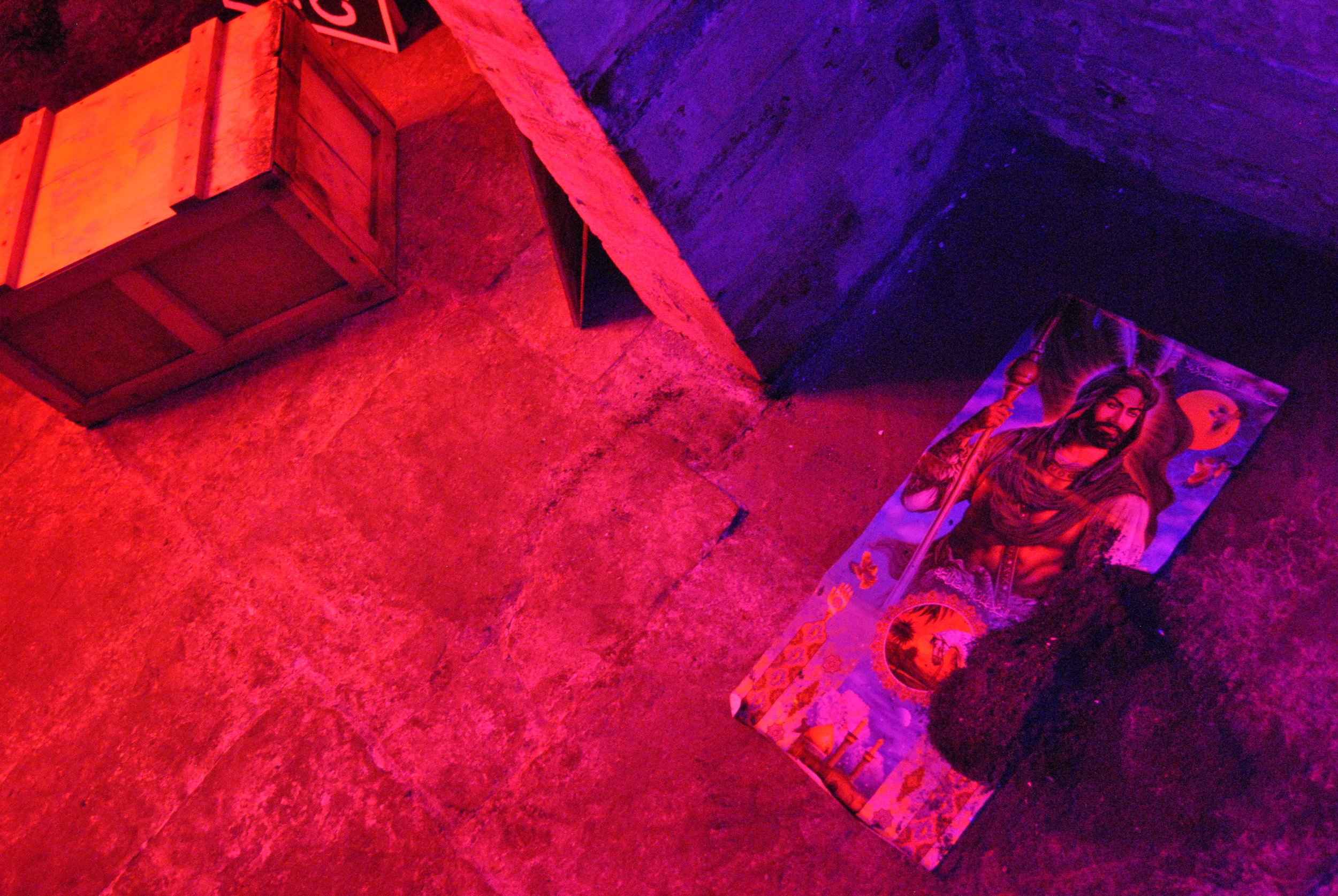SPEAKEASY: art in an age of prohibition | September 2011
Fighting the ‘New Dark Philistinism’ | Bruce Davies
Any exhibition taking place in 2011 that addresses the society in which we live could be seen as being in some way prescient, or a bandwagon being jumped on. In actual fact, such an exhibition could occur at any point in history and the chances are it would be in some way relevant to its epoch. At the time of writing, the current exhibition at the Henry Moore Institute of work by artist Mario Merz entitled ‘What Is To Be Done?’ takes a body of work from more than thirty years ago and presents it in a way that makes it seem as though it could have been conceived yesterday. Giovanni Lista states in his book ‘Arte Povera’:
Arte Povera does not yet have an authentic historiographical tradition since it continues to be a live trend in contemporary art. In fact its development is still a lasting, vital reality although two of its leading figures are no longer alive.[1]
Returning almost to the present day and looking at recent exhibitions such as HMI’s ‘Undone’ (2010), ‘The Plaza Principle’ curated by Derek Horton and Chris Bloor (2010), ‘Next to Nothing’ -Black Dogs (2011), ‘Woolgather Art Prize’ (2011) and other exhibitions too numerous to mention, every word of Lista’s statement rings perfectly true. 2011 has also seen another major retrospective of the work of, amongst others, Gordon Matta-Clarke[2] suggesting that despite his death in 1978, such work is a constant presence running throughout the modern and contemporary era; if this is the case then one might ask the question ‘is it possible to make an artwork that has no particular social or political relevance?’
SPEAKEASY was the result of an Open Submissions request for work that addressed the subject of freedom and prohibition in any way whether cultural, political, artistic or religious. Over the course of a month Derek Horton and I had the task of selecting work that best suited what was initially a very loose brief. Some works were made specifically in response to the brief, whilst others submitted pre-existing work; the resultant exhibition ranged from the overtly political to the quieter more personal response. At the foot of the stairs, in the gloom of a single 40 watt bulb, Alice Bradshaw’s words appear to be consuming themselves as her animation utilising words hole punched out of books loops endlessly amidst a construction of detritus. ‘Coming up for Air’ by Robert Sharples takes the title of a George Orwell novel in which the story’s main protagonist tries to find freedom in the nostalgia of a rose-tinted past. The trouble is that the present tense never matches up to the memory.
In Sharples’ altered monochromatic photograph we are given an image of hot air balloons rising up from the sky below, only to crumple as they appear to hit the sea above. Carolyn Shepherd refers to the relevance of social media, as witnessed in many parts of the world throughout 2011, with her ‘Freedom of Speech’ placard whilst Wendy Williams’ ‘Declaration’ is a wall mounted sculptural object, taking a ream of paper printed with the Declaration of Independence on one side, and the lyrics to ‘King of the Road’ on the other; butterflies appear to be bursting forth and cascading from every page of this document held together by driftwood and bolts.
Elsewhere, Jean McEwan’s ‘I’m Sorry’ apologises for the upset caused by some unspecified event in which her own idea of art seems to have clashed with the views of others, and Holly Mulveen’s subtle yet unsettling paintings on Aluminium seem to blend into the plaster of the wall. Matthew Merrick takes socialist ideology and endurance into a new realm with his ‘living sculpture’. Based on Arthur Dooley’s ‘Speakers Corner’ someone is asked to read continuously from a socialist text regardless of whether they are being listened to or not. Together Merrick’s ‘Speakers Corner’ and Andrew Nizinskyj’s flags, a literal reversal of the racist sentiment ‘there ain’t no black in the union jack’, set alongside the stars and stripes with all of the white removed, create the feeling of some kind of ad hoc, underground and poverty stricken UN meeting, the absolute antithesis of reality.
Sara Zaltash and Tom Railton create performance pieces that manage to leave behind traces of their time-sensitive work. Railton’s selection of protest songs are given readings that reveal something of their true, less than revolutionary, nature and are presented amongst an assemblage of apathetic protest banners, the messages of which are culled from his song list. Zaltash on the other hand is represented by a pile of wine soaked Soil, a poster of the Imam Ali and a swinging neon stage light that reads 艾未未.
Laura Oldfield Ford suggests that people feel that political engagement in art is fine so long at is kept at arms length, noting that those who ‘were really into my work when they thought insurrection was an abstract and somewhat ‘edgy’ concept’[3] find it a step too far if that concept becomes a reality. At the SPEAKEASY artists were allowed to take their vision as far as they wanted which in the case of Zaltash came close to anarchy as the neon is flung, accidentally, against the wall in the abandonment of her performance. Unusually, the performance by Kimbal Quist Bumstead leaves behind no trace whatsoever as Harry the puppet and the laptop that arrive with him also leave with him a day later. The only thing left behind is a lasting impression in the minds of the audience and the freedom of the road by which he arrived.
Freedom is a concept invoked by many under very different circumstances, but what is our understanding of the term? Two teenage commentators interviewed on the BBC, drinking rosé wine as Tottenham burned, suggested that it was ‘about showin’ the police we can do whatever we want . . . and that’s what we did.’ Elsewhere Gil Scott Heron from a very different point of view states ‘Freedom is the potential to spend one’s time in any fashion one determines’.
Freedom of Speech (2011) Carolyn Shephard
‘SPEAKEASY: art in an age of prohibition’ began life as a throwaway comment. A guest at a previous BasementArtsProject event likened it to ‘something out of 1920’s Chicago’, only here the illicit activity was art rather than the consumption of alcohol. Originally the term ‘speakeasy’ was an exhortation by the establishment’s owners to keep quiet and not draw attention to the activity within. For this project we have turned this notion on its head to suggest that people can feel free to say what they want. Rather than keep quiet, we will shout about it and truly make our presence known.
Without the tabula rasa aesthetic of the contemporary art space, the work for SPEAKEASY could just as easily have been cat portraiture or watercolour landscapes; the real freedom comes in doing something purely because you feel moved to do it regardless of the circumstances. With this in mind, the Basement could only ever be a political statement, our own ‘Declaration of Independence’ alongside anyone else who decided to do something because they felt it needed doing. Freedom, I like to think, is quite close to Gil Scot Heron’s reasoning, only with the caveat that it must be of benefit to others and not the detriment. 2011 for BasementArtsProject represents, hopefully, the first step in creating a project that will be accessible to all, artists and public alike. Providing a place to work and a platform from which to speak, we hope to give a clear voice to those amongst us who continue to believe in what they do, regardless of how difficult things might be elsewhere.
[1] Arte Povera; Lista,Giovanni. Gallery of the Arts 2006
[2] Pioneers of the Downtown Scene New York 1970’s; Barbican Art Gallery, London 3rd March – 22nd May 2011
[3] Riots? It’s the interpretations that really do the damage, harrumphs an art critic; JJ Charlesworth. Art Review, Oct 2011 Issue 53, pg 64
Bruce Davies | September 2011
Photos: Bruce Davies (except where indicated)






